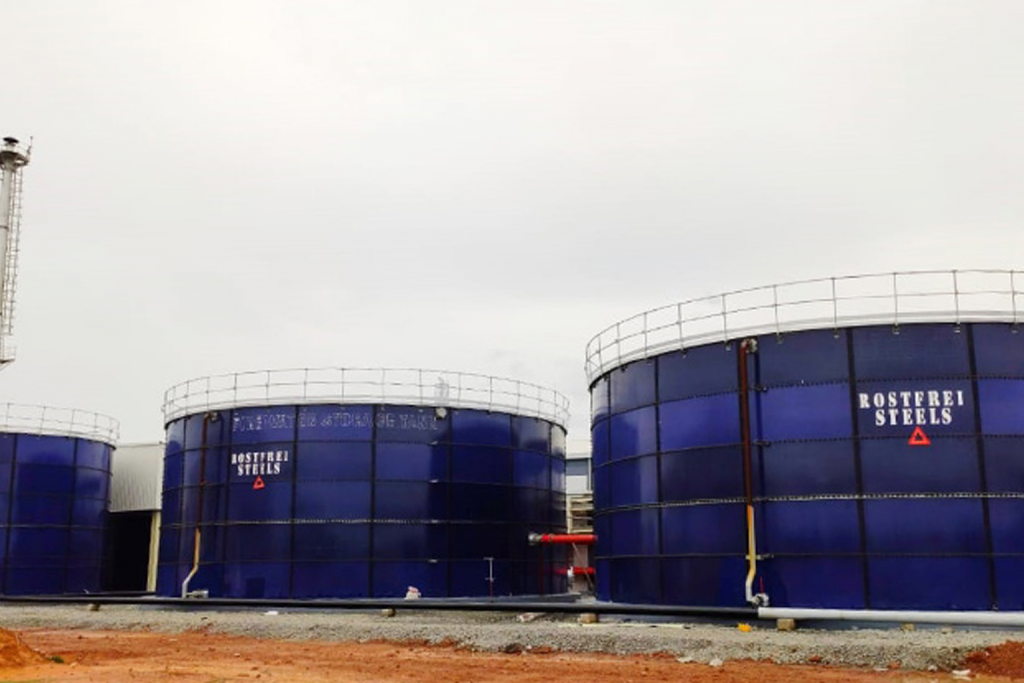Water storage tanks are used for fire protection in commercial and industrial locations. Fires can occur at any time for multifarious reasons. It is important to safeguard human life and our material assets from the destructive effects of fires. In the case of a fire, easily accessible water proves to be extremely useful. Custom water tanks can be installed in accordance with the size of the building and fire safety requirements. Today engineers and architects are turning to reliable and durable water tanks more than ever before.
Many Advantages of Water Storage Tanks
Using fire protection water storage tanks offers several advantages to industrial as well as individual users.
Easy Integration of Water Storage Tanks
Most water tank manufacturers are developing systems that allow the company to seamlessly integrate the water storage tank with the current fire protection system. Hence, there is no need to install separate systems. This provides the following benefits:
- It helps in reducing the total cost.
- With a completely integrated system, chances of some components or processes not being compatible with one another is greatly reduced. This diminishes chances of last minute surprises. Seamless integration makes the system more reliable.
Water Storage Tanks and Compliance with Fire Regulations
Companies and individuals are required by law to make certain provisions for fire safety. An important part of this is to stock adequate water for emergencies.
- Utilization of these tanks helps building owners and residents comply with official National Fire Protection Association (NFPA) standards.
- Businesses operating in rural or urban areas can also follow the various federal, state, and local fire codes that are applicable to their organization.
- Depending on the nature of your business and the size of the building, most companies are required to have access to water at all times. This could prove difficult in case there is a shortage or damage in the pipelines. In such cases, it comes in handy to have access to a water storage tank.
- Non-compliance of relevant codes could result in penalties or other severe consequences.
Important Factors Governing the Design and Construction of Water Tanks
Water tanks must be designed to ensure a reliable water supply over a long duration. Fire protection water supply requirements may vary across the states. However, there are still some common factors to be considered when designing these water tanks:
Construction Material
The water tank must be made of non-combustible material, stored above the ground, and equipped with an outlet that is compatible with your local fire services hoses. Steel, especially carbon steel, is the most common material used in the construction of fire protection water tanks. Carbon steel is proven to perform in challenging work environments where tanks may be exposed to fire or corrosive elements.
Use of the Right Tank Fittings
Metal fittings are always recommended for these tanks due to their ability to easily withstand high temperatures. They must be fitted correctly in order for firefighters to easily connect them to their hoses. If you are using a single water tank at your facility, it must be fitted with two outlets – one for fire-fighting and one for regular domestic use.
Tank Fabrication Standards
The tank must be fabricated following fabrication standards such as UL-142, UL-58, UL-1746, AWWA D-100-05, AWWA D-102-06, etc.
Tank Capacity
Tank capacity and duration of use also vary throughout the US. You need to check the water amount that is allowed for various counties or states. They may vary from 2000 to 4000 gallons for small properties and 10,000, 30,000, and 45,000 gallons for large properties. Water allocation for firefighting purposes may differ in high-risk areas.
Duration of Use
Usage may vary across high rise commercial buildings and small business organizations. For instance, the San Diego County Fire Authority requires users to install water tanks that ensure continuous water supply for 20 or 40 minutes at 250 gallons per minute of water flow.
Safety-Driven Features
These tanks must be equipped with safety-driven features such as level monitoring and overfill flow protection.
Important Types of Water Tanks for Fire Fighting
There are different layouts for firefighting water tanks. However, most designs follow either of the two layouts – cistern tanks and reservoir tanks. Some regulations may also require you to use ASME pressure vessels for firefighting storage requirements. Cistern water tanks follow traditional designs where water is stored permanently and extracted through pipes, whereas reservoirs may produce water by pumping or through gravity flow.
Now you know the importance of building the right cistern tank or a water reservoir for fire safety. It is important to source them from a reliable manufacturer. BEPeterson is a trusted and leading industry leader in fire safety water storage solutions. The company has been providing customized cistern tanks for use in commercial, residential, and industrial applications. The experts at BEPeterson can also design ASME pressure vessels to comply with fire codes in various counties or states.

